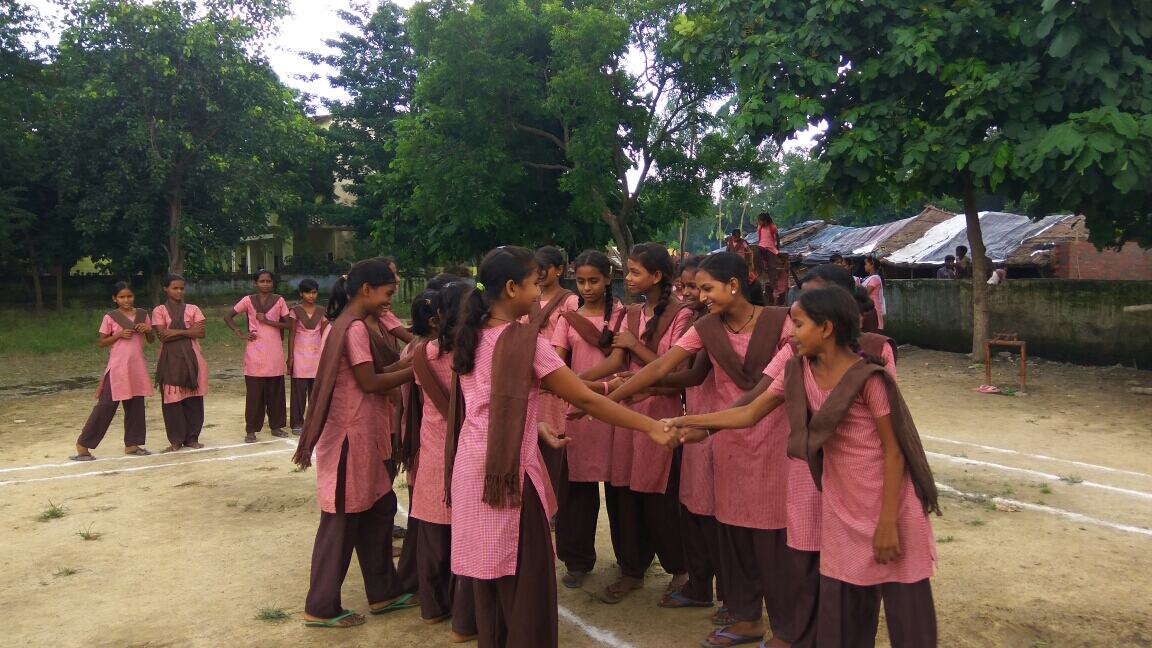Illumination of Study Tables Is Helping Hardoi Girls to Shine Brighter
In 20 residential schools (Kasturba Gandhi Balika Vidyalayas) of district Hardoi, UP, India, around 1833 girls received Solar Lamps by the District Administration.
 गाँव कनेक्शन 5 Oct 2018 9:40 AM GMT
गाँव कनेक्शन 5 Oct 2018 9:40 AM GMT

A changing society and a developing economy cannot make any headway if education, which is one of the important agents affecting the norms wherein the differences between the positions of women and men in the society do not lessen.
Despite India's ratification to Convention on the Rights of the Child (commonly abbreviated as the CRC or UNCRC) and the Convention on the Elimination of all forms of Discrimination against Women (CEDAW), girls continue to be treated as inferior and are socialized to put themselves last, thus undermining their self-esteem. Discrimination and neglect in childhood initiates a lifelong downward spiral of deprivation and exclusion from the social mainstream.
Foundations Of Initiatives
As this 11th October, marks the International Day of the Girl Child, a district in UP lay foundations for one of its kind Initiatives for its Kasturba Gandhi Balika Vidyalaya Girls'.
What began with a surprise Inspection of a KGBV in Hardoi went on to create and transform the face for all the KGBV in the District and provision of all forms of amenities to ensure that the students face no constraints in their studies.
ALSO READ: Sanitation Facilities Can Improve Educational Outcomes?
During a candid conversation with students during inspection, The District Magistrate, Pulkit Khare not only tried to get the inside story about their life in the KGBV but also inquired them about the problems and constraints they faced. He was moved by the problem cited by Khushbu, a student of that residential school and other KGBV girls who were initially a bit hesitant but gradually opened up and mentioned their concerns.
Solar Lamps
The most prominent issue was the Electricity and frequent Power-cuts which made it almost impossible for them to study post sunset which meant a major portion of their prime time for studies remained underutilized. The girls also seemed to be excited about getting a know-how of Computers which they were completely deprived of.
The District Magistrate patiently listened to all of it and what he went on to strategize next embarks a classic example of how a keen leader leaves no stone unturned when it comes to Doing Things to make Differences and ensure that the promises don't merely remain on papers.
In 20 residential schools (Kasturba Gandhi Balika Vidyalayas) of district Hardoi, around 1833 girls received Solar Lamps by the District Administration.
ALSO READ: Restructuring India's Schooling System
.Khare says that he was disturbed by the appeal of the girl students as their desire to study and excel was impeded by unavailability of regular light supply. Discussions with district level officers followed to find a solution. Contributions poured in from several segments and it was decided to provide a solar lamp to every girl of these residential schools.
Better Result Promised
A single day distribution function was organised recently by Hardoi administration. Stock entry of these solar lamps will be done by individual schools and they will be passed on to successive batches. The girls promised DM better results in their upcoming exams with beaming smiles on their faces.
Next, was arranging the Computers which came through CSR of a locally running organization. Also, CCTVs installation was done to ensure the safety and security of the girls.
Additionally, a "Book donation Drive" was launched throughout the District appealing people to donate books to help the students belonging to economically and socially weaker sections. This conceptualization bore results in the form of "Mini-Library" that shall be provided to the KGBVs so that the girls can have access to books and study materials.
ALSO READ: Homework Keeping Girls Away from Class in UP School
Considering the socio-psychological barriers, it takes extra efforts in rural settings to prevent drop-outs especially when it comes to the "Girls' education, but nevertheless, small steps definitely lead to the positive outcomes, the collector said. Empowering the girl child with education necessitates a change in India's deep-rooted mindsets of powerful figures, family members, teachers, and women via massive awareness and large-scale female welfare services across districts
Little thoughtful interventions undertaken have removed big hurdles for these girls to pursue their dream career through studies. Illumination of their study tables and freedom to choose their study hours empowers them now to shine brighter with their talents. A step which gives a definitive push to the dictum of 'Beti Padhaao' for girls of KGBV Hardoi. Illumination of Study tables is helping hardoi girls to shine brighterIn spite of certain outstanding examples of individual achievements, and a definite improvement in their general condition over the years, it remains true that Indian women still constitute a large body of under - privileged citizens.
Girl Education
Education seems to be the key factor, which only can initiate a chain of advantages to females. Key indicators such as literacy, enrollment and years spent in school explain the situation in the access to education and each of these indicators reveal that the level of female education in. The plight of women, in terms of education is further compounded by the negative attitude of parents toward female education.
The low adult literacy rates for women are a reflection of past underinvestment in the education of women and thus do not necessarily capture the recent progress.
The problem is not only confined to low enrollments, but school attendance of girls has also been found incredibly low. The reasons for not sending girls to school are both economic and social. In rural areas, girls are engaged in household chores. According to Census 2011, literacy situation in Uttar Pradesh is dismal with the literacy rate for females being abysmally low at 57.18 % as against 77.28 % for males.
More Stories




